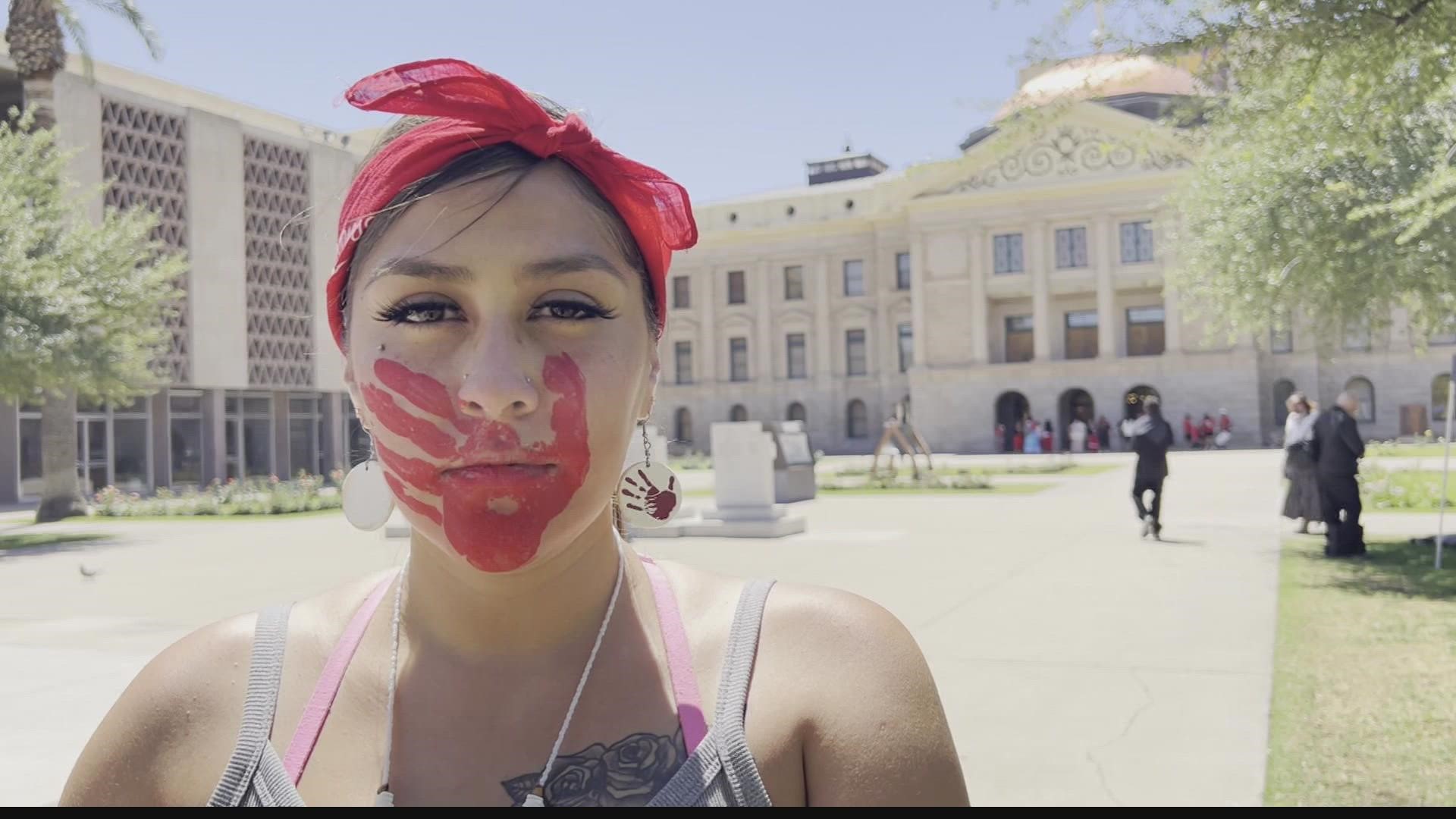PHOENIX — Cries for justice will be heard loud and clear at the Arizona State Capitol Thursday as several organizations gather for the second nationally recognized Missing and Murdered Indigenous Persons Awareness Day.
Native communities are ten times more likely to be victims of violent crime according to national data.
“We just never know how long we’re going to grieve," said Valaura Imus-Nahsonhoia, executive director of Honwungsi Consulting Services. "How long we are going to be searching for our loved ones?”
Honwungsi Consulting and the Arizona State Legislation are working in collaboration with Arizona Tribal programs and volunteers to host the 2022 Missing and Murdered Indigenous Persons Awareness Day in recognition of Hanna Harris.
Harris vanished on July 4, 2013, after going out with friends to celebrate Independence Day with friends in Lame Deer, Montana.
Missing indigenous people, especially women often go underreported because of communication barriers between tribal and state agencies.
The silent crisis of missing and murdered indigenous people
"Our lives are not valued," said Navajo Nation Amber Kanazbah Crotty. "We are a disposable population, a banished people."
Delegate Crotty is a member of the Missing and Murdered Diné Relatives (MMDR) task force helping to develop a framework for a proposed MMDR data institute.
Crotty said there is a lack of equity in the coverage of missing and murdered Dine people.
"We've heard from many families that they feel alone and have to do searches themselves due to a lack of resources."
Delegate Crotty and the task force have helped to develop a database on under-reported missing cases.
"As Tribal leadership, we can see the glaring gaps in what the Federal Bureau of Investigation (FBI) is not providing in terms of investigations," Crotty said. "The FBI will investigate crimes considered a major crime. So, if someone is missing and there’s no suspected reason of foul play, the FBI is not getting involved.”
Delegate Crotty said more needs to be done and she's not the only one.
More needs to be done
Representative Jermaine leads a committee studying the underline causes of Missing and Murdered Indigenous people.
“In some parts of the state there are crimes of opportunity, people going missing because we don’t have cell service or broadband," said Arizona State Representative Jennifer Jermaine. "Some parts of the state it’s tied to human trafficking and in some parts of the state, it’s domestic violence and sexual assault.”
Jermaine said the committee is working with law enforcement agencies to build cross-agency task forces to close the gap or inequity in communication.
She introduced HB2142 which will require agencies to reach out to federal partners once an adult has been missing for 30 days.
“People are going missing here in our state, in our local communities and we need to find them,” Jermaine said.
She said Arizona State University's Violent Victimization Lab in the School of Criminology and Criminal Justice is with American Indian leaders across the state to develop strategies to address and minimize missing and murdered Indigenous women and girls (MMIWG). The lab has found that Indigenous women are murdered at a rate of 10 times the national average.
The Arizona Capitol will be red to honor families of survivors of missing and murdered indigenous people.
Get Up to Speed
Catch up on the latest news and stories on the 12 News YouTube channel. Subscribe today.

